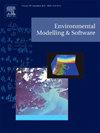澳大利亚生态社区利用云计算建立虚拟实验室:满足用户对生态建模和决策的不同需求
IF 4.8
2区 环境科学与生态学
Q1 COMPUTER SCIENCE, INTERDISCIPLINARY APPLICATIONS
引用次数: 0
摘要
生物多样性减少和气候变化是社会面临的最重要的环境问题之一。解决这些问题的信息得益于不断增加的大数据、云计算的进步以及随之而来的新分析工具。生物多样性和气候变化虚拟实验室"(BCCVL)和 "ecocloud "等生态分析虚拟实验室简化了对这些工具的访问。这些平台有助于减少开发编程技能、数据采集和整理以及建立模型所花费的时间和精力。最近,这一功能得到了扩展,产生了澳大利亚生态共用平台(EcoCommons Australia)--一个用于解决环境问题的基于网络的生态建模平台--升级了基础设施,改进了集合建模、建模后分析、工作流程透明度和可重复性。我们概述了以用户为中心的系统设计方法,从最初的利益相关者需求调查到用户参与测试以及与专家合作。我们通过四个案例研究来说明生态共享系统并比较模型评估统计数据,突出模块化平台是如何满足用户需求的。本文章由计算机程序翻译,如有差异,请以英文原文为准。
EcoCommons Australia virtual laboratories with cloud computing: Meeting diverse user needs for ecological modeling and decision-making
Biodiversity decline and climate change are among the most important environmental issues society faces. Information to address these issues has benefited from increasing big data, advances in cloud computing, and subsequent new tools for analytics. Accessing such tools is streamlined by virtual laboratories for ecological analysis, like the ‘Biodiversity and Climate Change Virtual Laboratory’ (BCCVL) and ‘ecocloud’. These platforms help reduce time and effort spent on developing programming skills, data acquisition and curation, plus model building. Recently this functionality was extended, producing EcoCommons Australia—a web-based ecological modeling platform for environmental problem-solving—with upgraded infrastructure and improved ensemble modeling, post-model analysis, workflow transparency and reproducibility. We outline our user-centered approach to systems design, from initial surveys of stakeholder needs to user involvement in testing, and collaboration with specialists. We illustrate EcoCommons and compare model evaluation statistics through four case studies, highlighting how the modular platform meets users' needs.
求助全文
通过发布文献求助,成功后即可免费获取论文全文。
去求助
来源期刊

Environmental Modelling & Software
工程技术-工程:环境
CiteScore
9.30
自引率
8.20%
发文量
241
审稿时长
60 days
期刊介绍:
Environmental Modelling & Software publishes contributions, in the form of research articles, reviews and short communications, on recent advances in environmental modelling and/or software. The aim is to improve our capacity to represent, understand, predict or manage the behaviour of environmental systems at all practical scales, and to communicate those improvements to a wide scientific and professional audience.
 求助内容:
求助内容: 应助结果提醒方式:
应助结果提醒方式:


